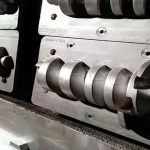The application of metal 3D printing technology is quite extensive, such as aerospace, defense, automotive, medical and other important industries. Because metal 3D printing technology can play such an important role, it is also growing rapidly at an unprecedented rate.
So, what are the key advances in metal 3D printing in the next 5 years? What are the key points for the future development of metal 3D printing? Jack Beuth, a mechanical engineering professor at Carnegie Mellon University (CMU) School of Engineering, made the following predictions:
- 1, Process design — In the future, users will be able to design metal 3D printing processes just like designing the geometric structure of parts. Therefore, the variables can be optimized according to the shape and characteristics of the parts. In fact, Beuth’s 3D printing laboratory has developed some “process drawing methods” that can show defects in the 3D printing process (such as molten pool geometry, microstructure, and sensitivity) in some major metal 3D printing processes.
- 2. Monitoring and control — In the near future, thanks to more advanced sensors and monitoring software, users will be able to fully understand the entire process of metal 3D printing, and therefore better understand how to control the quality of the final product, and these are Current metal 3D printing does not have it.
- 3, Material microstructure — Through manipulation during actual manufacturing, researchers will be able to control the material microstructure and properties of 3D printed parts, and even realize different microstructures at different positions of a single part. The current leader in this area is the Swiss Federal University of Technology in Zurich — they have developed a microscopic 3D printing process that can produce tiny metal objects.
- 4, metal powder materials — the current metal 3D printing powder materials on the market have the disadvantage of causing defects in the final printed parts, but in the future, new powder materials will no longer have this problem. In this regard, Equispheres and Northwestern Engineers have made good progress. The former has developed a new type of reinforced metal powder, while the latter has developed a faster and more economical method.
- 5, Porosity — users will have the ability to eliminate or design the internal pore structure of 3D printed parts — this ability is very important, because the control of porosity will significantly affect the fatigue resistance and manufacturing speed of metal parts.
do you know?
Nowadays, the metal powders used in metal 3D printers at home and abroad generally include:
Tool steel, martensitic steel, stainless steel, pure titanium and titanium alloys, aluminum alloys, nickel-based alloys, copper-based alloys, cobalt-chromium alloys and so on.
Link to this article:3 key points for the future development of metal 5D printing
Reprint Statement: If there are no special instructions, all articles on this site are original. Please indicate the source for reprinting:Mold Wiki,Thanks!^^

